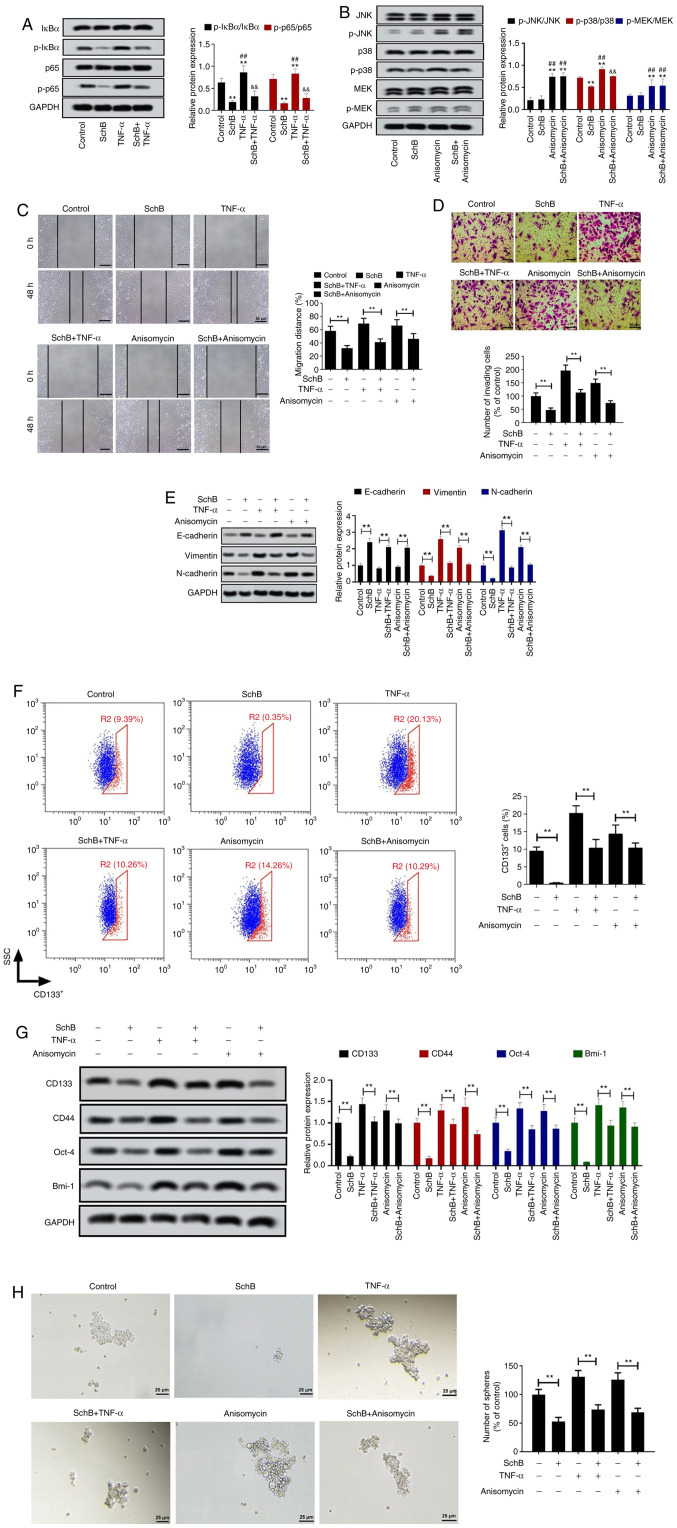Figure 5.
SchB attenuates the CSC properties of NCI-H460-CSCs via regulation of the NF-κB and p38 MAPK signaling pathways. To explore the role of the NF-κB and p38 MAPK signaling pathways in the effects of SchB on large-cell lung cancer, NCI-H460-CSCs were treated with 40 µmol/l SchB for 12 h and then stimulated with 10 ng/ml TNF-α or 2 ng/ml anisomycin for 30 min. Cells administrated with PBS or SchB alone were used as controls. Western blot was implemented to detect the expression levels of associated proteins in the (A) NF-κB and (B) MAPK signaling pathways. Differences were analyzed via two-way ANOVA with Tukey's correction. **P<0.01 vs. control. ##P<0.01 vs. SchB. &&P<0.01 TNF-α/anisomycin. (C) Cell migration and (D) invasion were assessed by wound healing and Transwell assays, respectively. Scale bar, 50 µm. (E) Expression levels of EMT-associated proteins were examined by western blot analysis. (F) Proportion of CD133+ cells was analyzed by flow cytometry. Blue cells represent CD133− cells and red cells represent CD133+ cells. (G) Protein expression levels of CD133, CD44, Oct-4 and Bmi-1 were determined by western blot analysis. (H) Sphere-forming assay was used to evaluate stemness in NCI-H460-CSCs. Scale bar, 25 µm. All experimental data are shown as the mean ± SD (n=3). **P<0.01. SSC, side scatter; SchB, Schisandrin B; CSC, cancer stem cell; Oct-4, octamer-binding transcription factor 4; Bmi-1, B lymphoma Mo-MLV insertion region 1 homolog; IκBα, inhibitor of nuclear factor κB α; p, phosphorylated.

